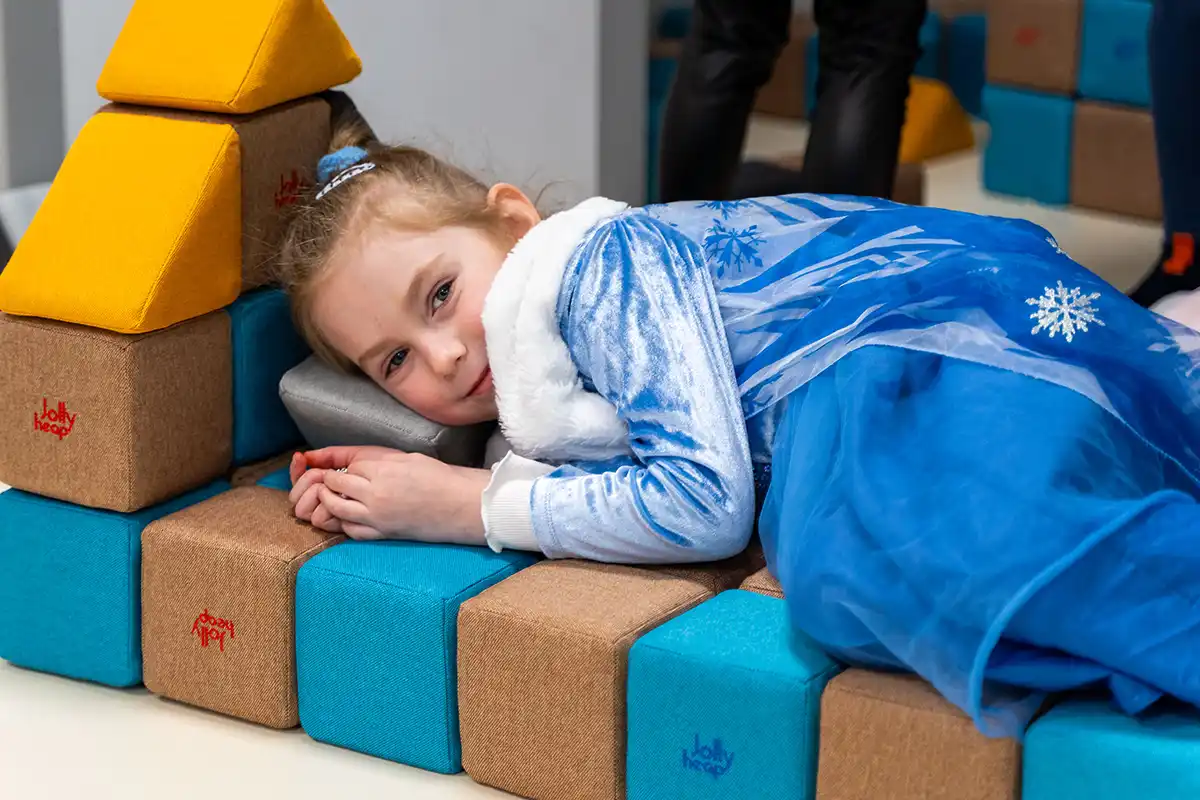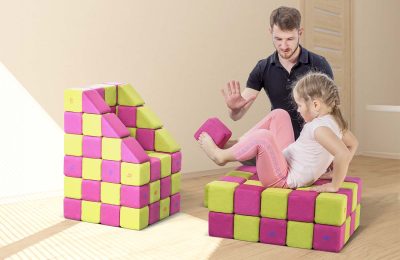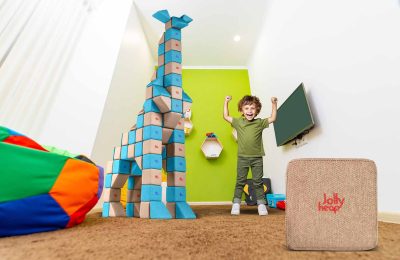Sensory Integration Therapy – What is it?
Have you ever noticed that some children are highly sensitive to the texture of their clothes, react intensely to loud noises, or seem uncoordinated in their movements? These observations might be more than mere quirks. They could be signs of sensory processing issues, where the brain has trouble receiving and responding to information through the senses. It’s not always easy for these children to navigate the world around them, but there’s a special kind of support available—Sensory Integration Therapy.
Sensory Integration Therapy is a form of occupational therapy that’s like a hidden gem in the world of child development. It’s designed specifically to help children who struggle with sensory processing. Think of it as a method to help the brain get better at receiving, organizing, and responding to sensory information. This therapy can be a game-changer for many families, helping children interact more effectively with their environment and easing daily challenges that may seem overwhelming.
The magic of Sensory Integration Therapy lies in its tailored approach. It’s not a one-size-fits-all kind of deal. Each child’s unique sensory needs are thoroughly assessed, and activities are chosen to specifically target their individual challenges. Whether it’s swinging, spinning, or tactile activities like playing with different textures, these seemingly simple tasks are carefully designed to help the brain make sense of sensory information.
What’s even more fascinating is the wide-reaching impact of this therapy. While the focus is on sensory processing, the benefits often extend into improvements in motor skills, behavior, and even social interactions. It’s about giving children the tools they need to feel more in control of their senses and, by extension, their world.

Table of Contents
Understanding Sensory Integration Therapy
What is Sensory Integration Therapy?
Sensory Integration Therapy is a specialized form of occupational therapy designed to help children who struggle with sensory processing issues. The essence of this therapy lies in its approach to assist children in better organizing and interpreting sensory information from their environment. This includes sights, sounds, textures, tastes, and movements that many of us process without a second thought.
The therapy often involves fun, structured activities in a sensory-rich environment that are tailored to each child’s unique needs. These can range from swinging and balancing activities to tactile play with different textures. The goal is to challenge the child’s ability to respond appropriately to sensory input by making gradual adjustments to the complexity and type of sensory stimulation. This approach helps improve their neural pathways, making sensory processing more efficient over time.
Who can benefit from Sensory Integration Therapy?
Sensory Integration Therapy is primarily aimed at children who exhibit difficulties with processing sensory input. This can include children with sensory processing disorder (SPD), autism spectrum disorder (ASD), attention deficit hyperactivity disorder (ADHD), and other developmental issues that impact their sensory processing abilities. Children who are overly sensitive to sensory stimuli, under-responsive, or who seek out sensory experiences in an unconventional manner can greatly benefit from this therapy. It is designed to meet each child at their level of need, helping them to cope better with the sensory aspects of their everyday environments – from the classroom to the playground, and at home.
Benefits of Sensory Integration Therapy
Improved sensory processing skills
One of the most significant benefits of Sensory Integration Therapy is the improvement in sensory processing skills. Through customized activities that progressively adapt to a child’s sensory response levels, children learn to process and respond to sensory information more effectively. This can manifest in various ways, such as a decreased sensitivity to textures or sounds, an improved ability to focus amidst distractions, or an enhanced capacity to engage in activities that involve coordinating movements and senses.
Enhanced school performance
As children become more adept at processing sensory inputs, their school performance often sees notable improvements. This is because many challenges in the classroom, from focusing during lessons to handwriting tasks and interacting with peers, can be traced back to underlying sensory processing issues. With Sensory Integration Therapy, children can develop better focus, organization, and motor skills, all of which are critical for learning and academic success. Parents and teachers frequently observe a positive change in participation, behavior, and overall achievement in school settings among children who undergo this therapy.
Better emotional regulation
Children with sensory processing difficulties can experience significant emotional distress when confronted with overwhelming sensory environments. Sensory Integration Therapy helps these children develop coping mechanisms, allowing them to manage their responses to sensory stimuli more effectively. This improvement in emotional regulation can lead to fewer meltdowns, tantrums, and episodes of anxiety, contributing to a better quality of life for the children and their families. Children often exhibit increased self-confidence and social skills, as they are better equipped to participate in a variety of activities and environments without becoming overwhelmed.
In sum, Sensory Integration Therapy offers a multitude of benefits for children facing sensory processing challenges. By fostering improved sensory processing skills, enhancing school performance, and contributing to better emotional regulation, this therapy paves the way for more rewarding and less stressful daily experiences for children and their families alike.
Common Techniques Used in Sensory Integration Therapy
Sensory Integration Therapy is like a toolbox brimming with strategies to help children who struggle with sensory processing challenges. These techniques are designed to help the child’s nervous system respond more effectively to sensory inputs, creating a positive change in their behaviors and abilities to engage with the world around them. Let’s dive into some of the common techniques used.

Deep pressure massage
Imagine the calming feeling of a tight hug – that’s essentially what deep pressure massage is all about. This technique uses firm, hands-on pressure to provide proprioceptive input, which can have a calming effect on the nervous system. It’s like telling the brain, “Hey, it’s okay to relax!” This can be particularly beneficial for children who are oversensitive to touch or those who seem constantly on the move and find it hard to sit still.
Therapeutic brushing
Therapeutic brushing, or the Wilbarger Brushing Protocol, involves using a specific soft-bristled brush to gently brush the child’s skin, followed by joint compressions. This technique aims to help desensitize the sensory system of children who might be overly sensitive to sensory inputs. Think of it as rebooting a computer – it helps the sensory system start fresh and process inputs in a more organized way.
Sensory diet implementation
A sensory diet is a carefully planned set of activities tailored to the child’s specific sensory needs. Just like a nutritional diet balances food intake, a sensory diet balances sensory activities throughout the day to keep the child feeling “just right.” Activities might include jumping on a trampoline, chewing on a chewy toy, or spending quiet time in a dimly lit space, depending on whether the child needs help ramping up or calming down their sensory system.
Sensory Integration Therapy at Home
Bringing sensory integration strategies into the home can empower parents and children, creating an environment that supports sensory health daily. Here are some practical tips and ideas for integrating sensory-smart strategies into your family’s routine.
Tips for incorporating sensory activities
– Schedule Regular Breaks: Integrate short, sensory-focused breaks into your child’s day. For example, jumping on a mini-trampoline before homework can help improve focus and attention.
– Involve the Child: Let your child have a say in the sensory activities. This makes them feel heard and more willing to participate.
– Keep It Simple: Sensory activities don’t need to be complex. Simple actions like carrying groceries, pushing a laundry basket, or kneading dough can provide valuable sensory input.
Creating a sensory-friendly environment
Creating a sensory-friendly home environment doesn’t have to be overwhelming. Start by observing what seems to soothe or agitate your child. From there, make small adjustments, such as:
– Reduce Overwhelming Stimuli: If bright lights or loud noises are problematic, consider using softer lighting and providing quiet zones or headphones that limit noise.
– Designate a Sensory Space: Create a small area where your child can relax and regroup, filled with items like bean bag chairs, weighted blankets, or sensory bins.
– Embrace Natural Elements: Elements like water, sand, and even potted plants can provide calming sensory experiences. A small indoor fountain or a sandbox can become a therapeutic tool.
Incorporating these techniques and strategies into your home and routine can make a big difference in the day-to-day lives of children with sensory processing challenges. It’s all about creating a supportive environment that allows them to navigate their sensory experiences more effectively.
Making the Most of Sensory Integration Therapy
To truly harness the benefits of sensory integration therapy for children with sensory processing issues, certain strategies can be pivotal. These strategies, involving setting realistic goals, maintaining open communication with therapists, and diligently monitoring progress, play a crucial role in maximizing the therapy’s effectiveness.
Setting realistic goals
Initiating therapy with a clear set of realistic, attainable goals is the first step toward a successful sensory integration journey. It involves understanding the child’s unique needs and challenges and then defining specific, measurable objectives. For example, if a child struggles with tactile sensitivity, a goal might be to gradually increase their tolerance to different textures. Setting such targeted goals not only provides direction to the therapy but also helps in tracking the child’s improvements over time.
Communicating with therapists
One of the keys to maximizing the impact of sensory integration therapy is effective communication with the therapists. This entails discussing the child’s daily routines, preferences, dislikes, and any subtle changes observed during the course of therapy.
Open, ongoing dialogue ensures that the therapy is tailored to the child’s evolving needs and that any adjustments needed are made promptly. It also fosters a collaborative atmosphere where parents and therapists work together as a team towards the child’s well-being.

JollyHeap blocks is multifunctional tool in SI Therapy. Discover them.
Monitoring progress
Keeping a close eye on the child’s progress throughout the therapy is paramount. This can be done by maintaining a progress journal, setting regular check-ins with the therapist, and noting any changes in the child’s behavior, skills, and comfort levels. Monitoring progress not only helps in validating the effectiveness of the therapy but also in making necessary adjustments to the treatment plan. Celebrating small victories along the way can significantly boost the child’s confidence and motivate continued improvement.
By focusing on these strategies, parents and caregivers can significantly contribute to the success of sensory integration therapy, ensuring that it meets the unique needs of children with sensory processing issues.
Conclusion
In summary, Sensory Integration Therapy is a specialized approach designed to help children who struggle with sensory processing issues. By focusing on individual needs, this therapy aids in their ability to interact more effectively with their environment, enhancing their learning and social interactions. The benefits, ranging from improved coordination and attention spans to enhanced self-confidence, can significantly impact a child’s developmental trajectory.
For families considering Sensory Integration Therapy, it’s important to consult with a trained and experienced therapist who can tailor a program specifically for your child’s needs. Embracing this therapy could be a transformative step in supporting your child’s growth and well-being, ensuring they achieve their fullest potential.


